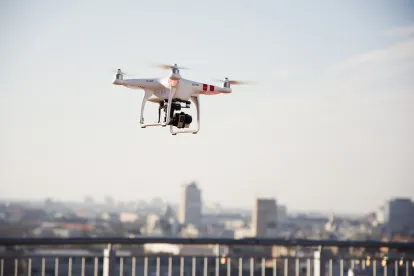In a long awaited release, on June 21, 2016, the Federal Aviation Administration (FAA) issued a Final Rule to allow for increased commercial operation of small, unmanned aircraft systems (UAS or drones) in the National Airspace System (NAS).[1] Existing regulation mandated that commercial users of UAS apply to the FAA for a case-by-case review for permission to use drones deterring widespread use of emerging drone technologies. The Final Rule tracks the Notice of Proposed Rulemaking issued in February 2015[2] and closes the regulatory gap that thwarted the use of drone technology by many utilities.
The potential for drone use in the utility sector has grown tremendously. Utilities see the potential for drones to reduce costs, improve safety, increase reliability, and more quickly analyze malfunctions. While utilities currently conduct most maintenance operations by visual inspection, the Final Rule begins to pave the way towards a more cost-effective UAS based maintenance.
The Final Rule adds a new part 107 to Title 14 of the Code of Federal Regulations to allow for routine commercial operation of UAS.[3] FAA stresses that this rule is part of an ongoing effort to integrate UAS operations and that it will proceed incrementally.[4] The Final Rule thus only applies to unmanned aircraft weighing less than 55 pounds as these small drones pose the lowest-risk.[5]
The FAA’s Final Rule implements a host of operational limitations on the commercial use of UAS. Drones may only be used in daylight or civil twilight[6] and must maintain an altitude of at most 400 feet above ground level.[7] Further, unmanned aircraft must be within visual line-of-sight of either the operator or an observer.[8]
While the FAA takes a cautious approach to use of UAS, it has included the option to apply for a waiver if applicants demonstrate that the operation of the UAS can be conducted safely under the terms of the waiver.[9] This method matches current practice regarding waivers to general aviation requirements. To qualify for a waiver, applicants must provide a description of the use of the UAS and documentation supporting that a deviation from the operational limitations can be achieved while maintaining safety.[10] The FAA will evaluate these applications on a case-by-case basis and set up an online portal to receive applications. The waiver provision potentially provides utilities the opportunity to evaluate the maximum efficacy of the use of UAS and the FAA anticipates it will “serve as a bridging mechanism for new and emerging technologies.”[11]
Notably, the Final Rule eases the limitations on operator qualifications. While prior regulations limited commercial drone operation to FAA licensed pilots, the new regulations provide for a less onerous pilot certification. Pilots must be at least 16 years old and possess a remote pilot airman certificate with at least a small-UAS rating.[12] To obtain a certificate, the pilot must demonstrate aeronautical knowledge by either passing an initial aeronautical knowledge test or by holding a pilot certificate, completing a flight review, and completing a small-UAS training course provided by the FAA.[13]
Additionally, the Final Rule implements requirements for the aircraft. While FAA airworthiness certification is not required, pilots must conduct pre-flight checks of UAS.[14] Further, the UAS must be available for FAA inspection and operators must report any “operation that results in at least serious injury, loss of consciousness, or property damage of at least $500” to the FAA.[15]
In sum, the regulations provide an incremental approach to allow for the increased commercial use of small-UAS. Indeed, the waiver provision provides opportunity for expanded use to expedite the process of incorporating drones into the utility sector, a process that may result in efficiency gains for the industry.
[1] The National Airspace System includes the airspace, navigation facilities, and airports of the United States along with associated information, services, rules, regulations, policies, procedures, personnel, and equipment. It includes components shared with the military.
[2] 80 FR 9544 (Feb. 23, 2015).
[3] Operation and Certification of Small Unmanned Aircraft Systems, Docket No.: FAA-2015-0150 at 10 (2016) [hereinafter Final Rule].
[4] Final Rule at 27-28.
[5] Id. at 8.
[6] Civil twilight refers to the half-hour before sunrise and half-hour after sunset.
[7] Final Rule at 216-230.
[8] Id. at 119-120.
[9] Id. at 27, 32.
[10] Id. at 32.
[11] Id. at 30.
[12] Id. at 390-391
[13] Id. at 12.
[14] Id. at 492-496.
[15] Id. at 470-477.


 />i
/>i
